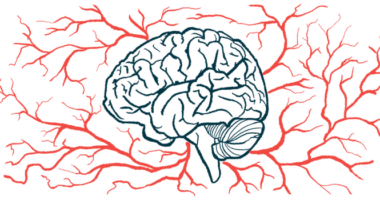NIH grant supports work into low-cost way of monitoring stroke risk
$426K award to biomedical engineer using light to check blood flow to brain

A biomedical engineer at Kennesaw State University has been given a $426,000 grant to build a low-cost device helping to predict the risk of a stroke in children with sickle cell disease by using light to monitor blood flow to the brain.
Paul Lee, PhD, an assistant professor at Kennesaw State in Georgia, will use the three-year grant from the National Institutes of Health to make a more economical device, one accessible in countries where sickle cell is common but resources for screening are limited.
“My goal is to develop an affordable low-cost, light-based device that can measure brain blood flow in children with sickle cell disease,” Lee, who heads the Translational Biomedical Optical Laboratory at Kennesaw State, said in a university press release.
Strokes can follow limited blood flow due to sickle cell disease
Sickle cell disease occurs when red blood cells take on a sickle-like shape, and tend to get trapped inside small blood vessels. As a result, a clot can form. If parts of the clot break off and travel to the brain, they can block blood flow and cause a stroke. Stokes also can be caused by blood vessel narrowing in the brain due to buildup of sickled red blood cells, limiting blood flow.
While screening with a transcranial Doppler ultrasound and disease treatments — including red blood cell transfusions — help to lower the risk and frequency of strokes, not all children with sickle cell have access to recommended prevention approaches, including in wealthier countries like the U.S.
In poorer countries where fewer resources are available and sickle cell can be more common, like those of sub-Saharan Africa, Doppler screening can be prohibitively costly. Moreover, only a few hospitals are reported to have certified imaging operators.
Unlike a transcranial Doppler ultrasound, which uses sound waves to detect how red blood cells are moving within blood vessels in the brain, Lee is engineering a device that scatters light waves to detect changes in blood flow in a child’s brain.
He plans to have a prototype device ready within three years. “My long-term plan is to disseminate this device to southern African countries and increase the number of children who get access to the screening protocol,” Lee said.
Light technology as a low-cost way of screening for stoke risk
After completing his PhD at the University of Michigan, Lee began working with sickle cell disease at Children’s Healthcare of Atlanta. He later joined the Kennesaw State faculty, where he thought of making use of light-based technology as a low-cost way of screening for stroke.
“Sickle cell disease affects any major organs,” Lee said. “But I’m especially interested in the brain disease aspect of it because the brain is only 3% of the body weight but uses almost 20% of the cardiac output,” referring to the amount of blood pumped by the heart to the body.
“The brain requires adequate oxygen delivery to meet the metabolic demand for normal function. But sickle cell disease causes a lower oxygen level and abnormal perfusion in the brain, which is associated with a high risk of stroke,” Lee said.
Lee’s project also will help in training undergraduate students in various aspects of biomedical engineering, including computer modeling, optical device design, and human testing.
“I’m passionate about being a biomedical engineer, particularly, who works on light tissue interactions,” Lee said. “I want to develop technology to use light for noninvasive tissue diagnostics. This has become my lifetime mission. It’s a long-term project, but I want to see this through.”







